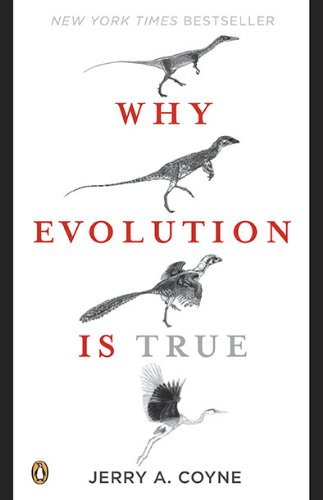Design As Evidence of Evolution or Creation
It’s important to realize, though, that there’s a real difference in what you expect to see if organisms were consciously designed rather than if they evolved by natural selection. Natural selection is not a master engineer, but a tinkerer. It doesn’t produce the absolute perfection achievable by a designer starting from scratch, but merely the best it can do with what it has to work with. Mutations for a perfect design may not arise because they are simply too rare. The African rhinoceros, with its two tandemly placed horns, may be better adapted at defending itself and sparring with its brethren than is the Indian rhino, graced with but a single horn (actually, these are not true horns, but compacted hairs). But a mutation producing two horns may simply not have arisen among Indian rhinos. Still, one horn is better than no horns. The Indian rhino is better off than its hornless ancestor, but accidents of genetic history may have led to a less than perfect “design.” And, of course, every instance of a plant or animal that is parasitized or diseased represents a failure to adapt. Likewise for all cases of extinction, which represent well over 99 percent of species that ever lived. (This, by the way, poses an enormous problem for theories of intelligent design. It doesn’t seem so intelligent to design millions of species that are destined to go extinct, and then replace them with other, similar species, most of which will also vanish. ID supporters have never addressed this difficulty.)
Organisms aren’t just at the mercy of the luck of the mutational draw, but are also constrained by their development and evolutionary history. Mutations are changes in traits that already exist; they almost never create brand-new features. This means that evolution must build a new species starting with the design of its ancestors. Evolution is like an architect who cannot design a building from scratch, but must build every new structure by adapting a preexisting building, keeping the structure habitable all the while. This leads to some compromises. We men, for example, would be better off if our testes formed directly outside the body, where the cooler temperature is better for sperm. The testes, however, begin development in the abdomen. When the fetus is six or seven months old, they migrate down into the scrotum through two channels called the inguinal canals, removing them from the damaging heat of the rest of the body. Those canals leave weak spots in the body wall that make men prone to inguinal hernias. These hernias are bad: they can obstruct the intestine, and sometimes caused death in the years before surgery. No intelligent designer would have given us this tortuous testicular journey. We’re stuck with it because we inherited our developmental program for making testes from fish-like ancestors, whose gonads developed, and remained, completely within the abdomen. We begin development with fish-like internal testes, and our testicular descent evolved later, as a clumsy add-on.
Notes:
There's a big difference between how species would look if they were designed or engineered versus how they would look if they evolved. Evolution works with pre-existing traits, and engineer works from scratch.
Folksonomies: evolution creationism traits
Taxonomies:
/pets/large animals (0.524992)
/art and entertainment/visual art and design/design (0.485681)
/science/medicine/surgery (0.430056)
Keywords:
Indian rhino (0.967542 (neutral:0.000000)), fish-like internal testes (0.965477 (negative:-0.281662)), natural selection (0.953338 (positive:0.621671)), tortuous testicular journey (0.905814 (neutral:0.000000)), vanish. ID supporters (0.883749 (negative:-0.578799)), true horns (0.765250 (negative:-0.297974)), real difference (0.761253 (positive:0.403814)), pre-existing traits (0.760574 (positive:0.424687)), big difference (0.750761 (positive:0.576697)), absolute perfection (0.744273 (positive:0.890211)), inguinal hernias (0.744231 (negative:-0.686709)), African rhinoceros (0.743807 (neutral:0.000000)), master engineer (0.742118 (neutral:0.000000)), brand-new features (0.738860 (positive:0.541692)), Indian rhinos (0.737710 (neutral:0.000000)), engineer works (0.737428 (positive:0.292817)), perfect design (0.731031 (neutral:0.000000)), inguinal canals (0.729590 (negative:-0.384610)), hornless ancestor (0.726524 (neutral:0.000000)), mutational draw (0.726311 (positive:0.616350)), single horn (0.724924 (neutral:0.000000)), enormous problem (0.723821 (positive:0.443454)), clumsy add-on (0.722456 (negative:-0.838946)), genetic history (0.717695 (negative:-0.618960)), similar species (0.716715 (neutral:0.000000)), intelligent design (0.715738 (positive:0.443454)), testicular descent (0.715592 (neutral:0.000000)), developmental program (0.714671 (negative:-0.726022)), damaging heat (0.711084 (negative:-0.651160)), evolutionary history (0.708938 (negative:-0.616485))
Entities:
engineer:JobTitle (0.763990 (positive:0.457244)), tandemly:Person (0.476907 (positive:0.242222)), seven
months:Quantity (0.476907 (neutral:0.000000)), 99 percent:Quantity (0.476907 (neutral:0.000000))
Concepts:
Evolution (0.967621): dbpedia | freebase | opencyc
Rhinoceros (0.879001): dbpedia | freebase | opencyc
Testicle (0.718460): dbpedia | freebase | opencyc
Intelligent design (0.650128): dbpedia | freebase | yago
Evolutionary biology (0.581403): dbpedia | freebase | opencyc
Indian Rhinoceros (0.578332): website | dbpedia | yago
Natural selection (0.571584): dbpedia | freebase
Mutation (0.543568): dbpedia | freebase





